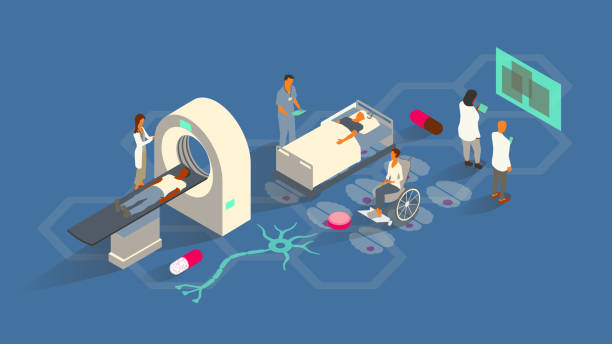Alternative Treatments, Health Conditions
What Are Back Pain Relief Tools
Back pain is a common ailment that affects millions of people worldwide. It can be caused by a variety of factors, including poor posture, muscle strain, injury, or underlying medical conditions. Chronic back pain can significantly impact a person’s quality of life, making it difficult to perform daily activities and even affecting their mental health. In this article, we will discuss various back pain relief tools available that can help alleviate symptoms and improve overall well-being.
Back pain relief can take numerous forms, ranging from simple stretching exercises to complex medical procedures. Rest, ice, and over-the-counter pain medication are frequently used to manage acute back pain, which can last anywhere from a few days to a few weeks. However, chronic back pain that lasts longer than 12 weeks may necessitate more specialist treatment, such as physical therapy, chiropractic care, or surgery. Regardless of the degree of the pain, there are numerous solutions available to help people manage their symptoms and enhance their quality of life.

Understanding Back Pain
Back pain is a prevalent ailment that affects millions of individuals globally. Injury, poor posture, medical issues, and other reasons can all contribute to it. Understanding the origins, kinds, symptoms, and diagnosis of back pain is critical for achieving treatment and avoiding repeat attacks.
Causes of Back Pain
Back discomfort can be caused by many factors, including:
- Muscle strain or sprain
- Nerve Compression or Damage
- Herniated disc
- Arthritis
- Poor posture
- Medical issues such as osteoporosis, fibromyalgia, and scoliosis
Types of Back Pain
There are two types of back pain: acute and chronic. Acute back pain occurs suddenly and usually lasts shorter than six weeks. Chronic back pain is ongoing and lasts more than three months.
Symptoms and diagnoses
The symptoms of back pain vary based on the origin and severity of the condition. Common symptoms include:
- Back pain might be dull or acute
- Stiffness or reduced range of motion
- Numbness or tingling in your legs
- Weakness in the legs
Doctors may use a physical exam, imaging tests like X-rays or MRI scans, and nerve conduction investigations to evaluate back pain. Depending on the source and severity of the disease, treatment options may include medication, physical therapy, chiropractic care, or surgical intervention.
Overall, knowing the origins, types, symptoms, and diagnosis of back pain is critical for getting relief and avoiding recurrent attacks. By improving posture, exercising frequently, and seeking medical assistance when necessary,

Non-Invasive Relief Options
Non-invasive methods of back pain management are frequently the first line of defense. These alternatives can vary from basic home cures to more advanced therapy. Here are a few non-invasive relief solutions for back pain:
Heat and Ice Therapy
Heat and ice therapy are two of the most popular home cures for back pain. Applying heat to the affected area can stimulate blood flow and relax muscles, whereas ice can reduce inflammation and numb it. For heat therapy, patients can utilize heating pads or hot water bottles, while ice packs or frozen vegetables can be used for cold therapy.
Exercise and Physical Activity
Exercise and physical exercise can help to alleviate back pain by strengthening the muscles that support the spine. Low-impact exercises like walking, swimming, and yoga can be very beneficial. A physical therapist can also create an exercise regimen based on the patient’s individual demands.
Massage and Manual Therapy
Massage and manual therapies, such as spinal manipulation, acupuncture, and chiropractic care, can help reduce back pain by improving circulation, decreasing inflammation, and encouraging relaxation. These therapies should be performed by a licensed professional who has prior experience treating back pain.
Overall, non-invasive treatment alternatives for back pain can be beneficial. Patients should contact with their healthcare professional to determine which solutions are appropriate for their specific requirements.

Advanced Pain Management
Advanced pain management approaches may be required for people suffering from chronic back pain to relieve symptoms and enhance their quality of life. This section of the article will look at some of the most popular advanced pain treatment methods available.
Medicines and Supplements
To treat severe back pain, prescription drugs may be required. Nonsteroidal anti-inflammatory medications (NSAIDs) and muscle relaxants are frequently used to alleviate inflammation and muscle strain. Supplements like glucosamine and chondroitin may also be prescribed to improve joint health and alleviate discomfort.
Supportive Devices
Back braces and cushioning devices can provide support and pain relief by relieving strain on the spine. Transcutaneous electrical nerve stimulation (TENS) and nerve stimulation devices can also help relieve pain by blocking pain impulses to the brain.
Surgical Interventions
In some circumstances, surgical intervention may be required to treat chronic back pain. Spinal fusion and laminectomy are two procedures that can help to stabilize the spine and relieve nerve pressure. Depending on the individual’s needs and condition, new therapies, such as less invasive procedures, may be accessible.
Overall, improved pain management strategies can help people suffering from persistent back pain. It is critical to collaborate closely with a healthcare practitioner to develop the most effective treatment strategy for each individual.

Lifestyle Changes for Long-term Relief
When it comes to managing back pain, lifestyle changes can help you get long-term relief. Here are some ideas to help improve your posture, sleep better, reduce stress, and relax.
Improve Posture and Sleep
Poor posture is a leading cause of back discomfort. Individuals can improve their posture by consciously sitting up straight, keeping their shoulders back, and avoiding slouching. Furthermore, sleeping on a supportive mattress and pillow can assist keep your spine in good alignment throughout the night. It is also advised to avoid sleeping on one’s stomach, which might strain the neck and back.
Stress Reduction and Relaxation Techniques
Stress can increase back pain symptoms, therefore learning how to manage stress can be beneficial. Deep breathing, meditation, and yoga are among the relaxation strategies that can aid with stress reduction. Good time management and prioritizing self-care activities can also assist in alleviating stress.
Incorporating physical activity into everyday activities can also assist in reducing stress and enhance overall health. Walking, swimming, and cycling can all enhance cardiovascular health and strengthen the muscles that support the back.
Finally, therapeutic massage can be an effective way to manage back discomfort. Massage can help relieve muscle tension and enhance circulation, which leads to less discomfort and more relaxation.
Overall, implementing simple lifestyle changes can help you manage back discomfort in the long run. Individuals can reduce their pain and enhance their quality of life by focusing on posture, sleep, stress management, and relaxation techniques.
Conclusion
In conclusion, the variety of back pain relief tools that were talked about gives people who are looking for effective answers a lot of options. There are a lot of choices, from therapeutic gadgets to ergonomic supports, so everyone can find something they like. To effectively manage pain, it is important to know your own unique needs and carefully incorporate these tools into a custom plan. Giving people the right tools lets them take charge of their back pain relief, which leads to a more comfortable and busy lifestyle. Remember that the first step to getting better is to find the tools that help you the most.


